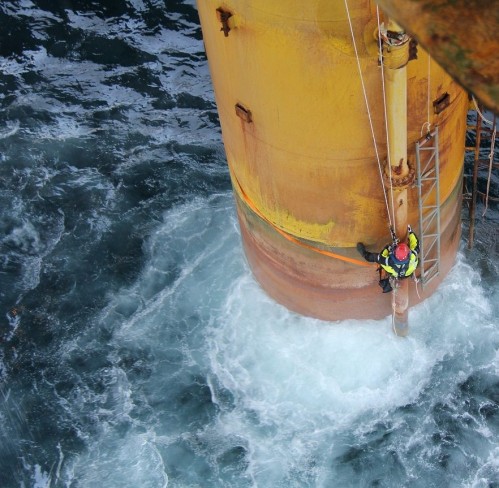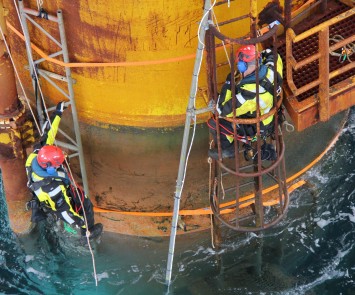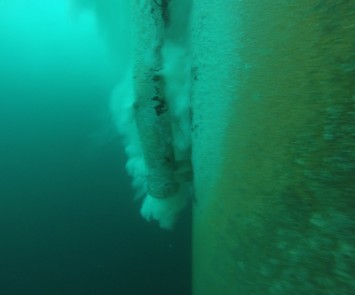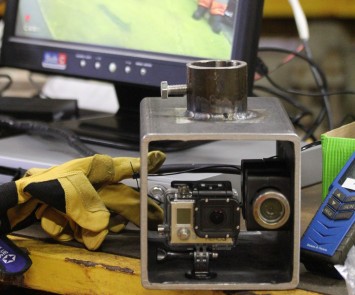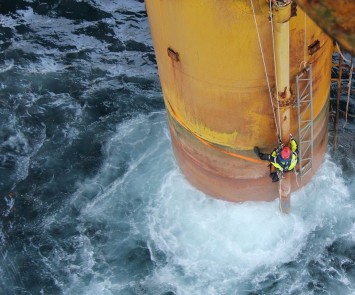Dump Caisson Inspection
SubC initiated the project in February 2018 and completed the project within 4 days – and the actual time spent on the inspection was 12 hours.
Urgent inspection
The dump caisson for produced water was leaking directly up against the monopile. Therefore, there was a substance for concerns due to potential wear on the monopile and the monopile urgently had to be inspected.
SubC was contacted to carry out the inspection, and we had to go offshore within 2 days, and a shut down during the period was unavoidable. The objective for solving this project was, therefore, to perform the work within a short time frame to reduce the costs due to shut down. In 2 days, we had to produce the RAMS / Method Statements and the equipment to clean and inspect the monopile.
The equipment comprised:
- a manually operated high-pressure cleaning system, operated by two rope access technicians (RATs)
- a video camera for live footage
- a camera for still photos
All installed in a steel housing for manual handling and inspection by the RATs.
On the topside, a monitor was used for inspection, guidance and help for the RATs to reach the right places, to make sure the final inspection could be performed correctly.
We were working directly in the splash zone requiring our skilled RATs were in full compliance with the rules and regulation from IRATA (Industrial Rope Access Trade Organization).
SubC completed the inspection within 12 hours
To perform the work within the shortest possible time frame was our target and to keep the time we used 3 RATs and 1 supervisor. Further, a good, professional working relationship with the platform crew ensured that the job was completed within this time frame.
Another solution if the situation was different
Today, if the situation was different, we would use our Robotic Crawler to perform the job in the splash zone. It is possible to crawl down the dump caisson and perform the inspection with the Robotic Crawler and its applications. This will significantly improve HSE, as human personnel would not have to tackle the risky work due to ocean waves.
